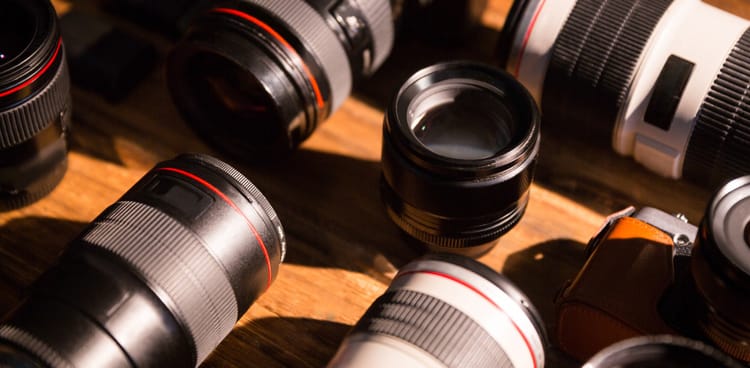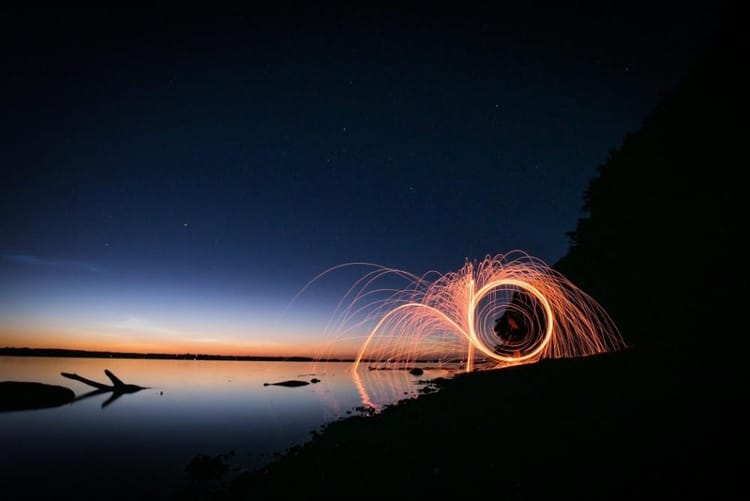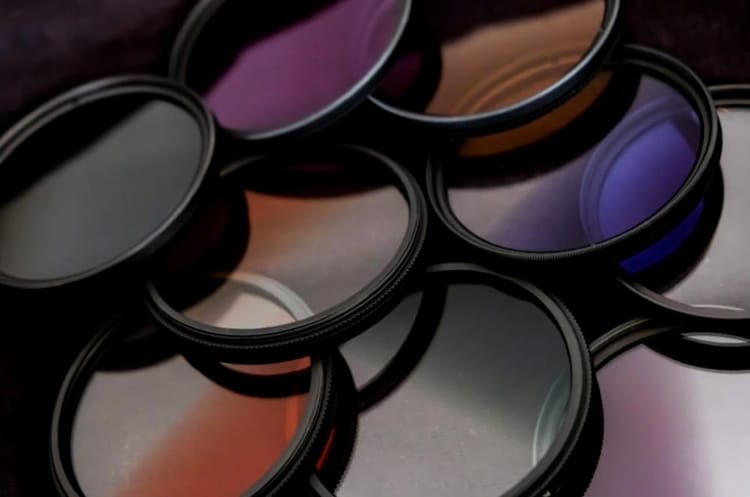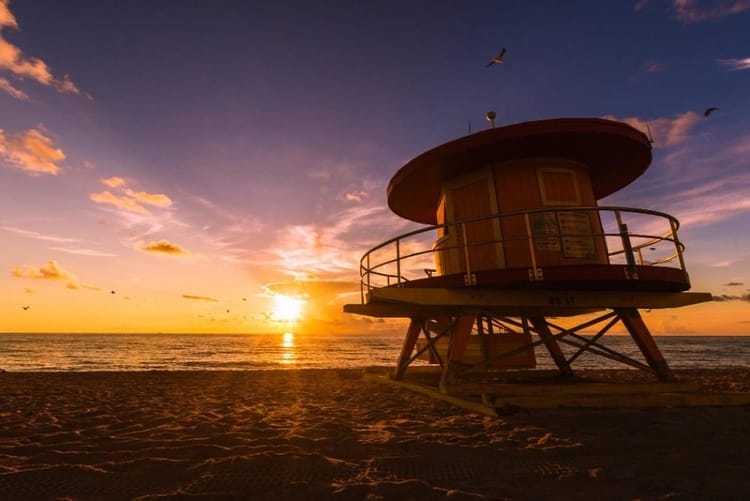Nikon Lenses for Beginners: Affordable Options to Kickstart Your Photography
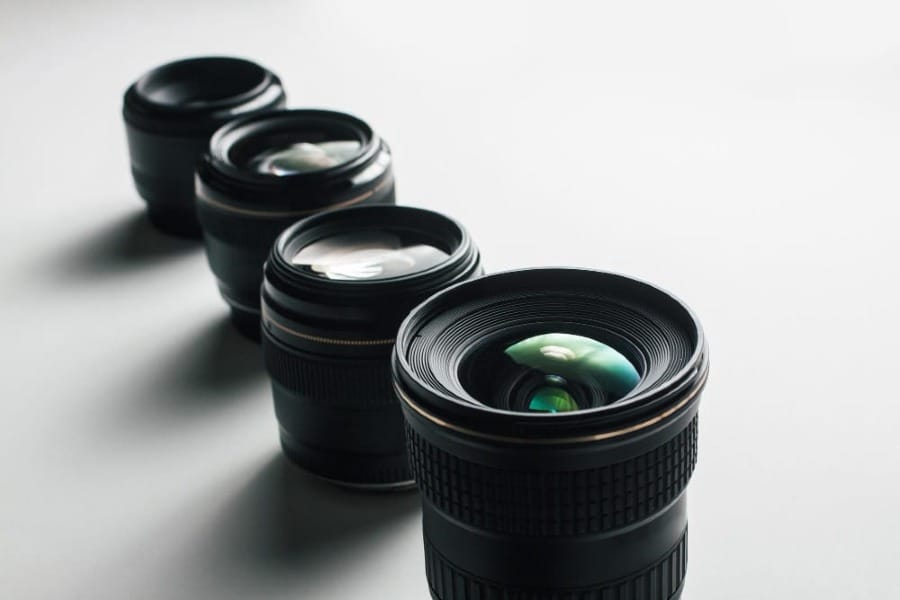
Introduction
When starting out in photography, the camera lens is as crucial as the camera itself. Choosing the right lens can significantly impact the quality and style of your photos, especially for beginners exploring various subjects and techniques. Nikon lenses are an excellent choice for those new to photography, offering a wide range of quality lenses that meet diverse needs without breaking the bank. With Nikon’s reputation for reliable optics and accessible options, even budget-friendly lenses provide impressive image quality and the potential to create beautiful, professional-looking photos.
For beginners, understanding the different types of lenses and their uses can seem overwhelming. However, knowing which lenses deliver the best value for your money can simplify the selection process and help you start shooting with confidence. Nikon lenses are available in versatile designs, from prime to zoom lenses, each serving a unique purpose to elevate your photography skills. This guide will walk you through some of the top affordable Nikon lenses for beginners, focusing on options that blend quality with affordability. Whether you’re interested in portraits, landscapes, or macro photography, this list offers something to help you kickstart your journey with the right equipment in hand.
Why Lenses Matter More Than the Camera Body
When getting started in photography, it’s common to focus on the camera body’s specs, yet the lens often plays a more vital role in achieving high-quality results. While a camera body impacts aspects like resolution, focusing speed, and handling, the lens ultimately defines the look, sharpness, and depth of your images. Nikon lenses stand out as versatile and reliable options that significantly impact photo quality, making them a valuable investment regardless of the camera body they’re paired with. Here’s why lenses hold greater importance and how they enhance your overall photography experience.
Image Quality and Sharpness
The lens you use directly influences sharpness, color rendition, and overall clarity. Lenses have various optical designs, coatings, and elements that control light distortion, which can lead to cleaner, crisper images compared to those produced by a basic kit lens. Even an entry-level Nikon camera can produce professional-quality photos when paired with high-quality Nikon lenses. By investing in a good lens, you can maintain consistent image quality, making your photos look sharper and more detailed, which is especially crucial when printing or enlarging images.
Creative Control Over Depth of Field
One of the most exciting elements lenses offer is control over depth of field, allowing you to blur backgrounds, isolate subjects, or keep everything in focus, depending on your needs. Prime lenses, for example, often feature wide maximum apertures (like f/1.8 or f/1.4), enabling you to achieve a creamy, defocused background that gives images a professional look. This effect is crucial for portraits, food photography, and other styles where you want to focus attention on the subject. Nikon lenses with wide apertures provide beginners with creative flexibility that’s difficult to achieve with a camera body alone.
Versatility and Long-Term Investment
Camera bodies frequently become outdated as technology advances, with new models offering faster processors, improved focusing, or higher resolutions. Lenses, however, are long-term investments. A well-chosen Nikon lens can last for years, and even decades while retaining its value and quality. This longevity makes lenses a smarter investment for beginners, as they can continue using the same lenses even if they eventually upgrade their camera body. Nikon has maintained compatibility across many of their lens systems, meaning that a lens purchased today may work seamlessly with future camera models.
Enhancing Low-Light Performance
Lenses with wide apertures, like f/1.8 or f/2.8, let more light hit the sensor, making it easier to shoot in low-light situations without increasing ISO or slowing down shutter speed. While a high-end camera body may offer excellent low-light sensitivity, the right lens can reduce noise and enhance image quality in darker settings. Many affordable Nikon lenses come equipped with wide apertures, allowing beginners to explore shooting in various lighting conditions without compromising quality.
Summary
In short, lenses are foundational to your photography, often more so than the camera body. A quality Nikon lens provides sharper images, creative depth control, and longevity, giving beginners an advantage that extends beyond technical specifications.
Key Factors Beginners Should Consider When Choosing a Nikon Lens
Choosing the right lens can be daunting, especially for beginners, but understanding a few key factors can make the selection process easier and more rewarding. With the vast range of Nikon lenses available, it's important to prioritize certain elements to ensure you find a lens that meets your needs and enhances your photography. Here’s what to consider when choosing a Nikon lens, especially if you’re just starting out.
Focal Length
Focal length, typically measured in millimeters (mm), determines the field of view of your lens and how close or far away subjects appear. Nikon lenses are available in a wide range of focal lengths, from ultra-wide (under 24mm) to telephoto (above 200mm). For beginners, choosing a focal length depends on the type of photography you’re interested in:
- Wide-Angle Lenses (10-24mm): Ideal for landscapes and architecture, capturing more of the scene in a single shot.
- Standard Lenses (35-50mm): Great for everyday photography, offering a natural perspective close to what the human eye sees.
- Telephoto Lenses (70mm and above): Useful for wildlife and sports, bringing distant subjects closer.
Deciding on the right focal length helps narrow down options and find a lens that aligns with your photographic style.
Aperture
The aperture controls the amount of light entering the camera and affects the depth of field or how much of the image appears in focus. Wider apertures, like f/1.8 or f/2.8, let in more light and create a shallow depth of field, resulting in a beautiful background blur (bokeh) that isolates the subject. For beginners, Nikon lenses with wide apertures are especially beneficial for low-light photography, such as evening events or indoor portraits, without needing to raise the ISO or slow down the shutter speed.
Lens Compatibility (DX vs. FX)
Nikon offers two primary lens mounts: DX (crop sensor) and FX (full-frame). For most beginners, DX lenses are more affordable and pair perfectly with Nikon’s crop-sensor DSLR and mirrorless cameras. However, if you plan to upgrade to a full-frame camera in the future, investing in FX lenses may offer greater compatibility and longevity. Nikon lenses in the DX range still provide high-quality results and are designed specifically for the smaller crop-sensor cameras many beginners use.
Image Stabilization (Vibration Reduction)
Nikon lenses with Vibration Reduction (VR) technology are valuable for beginners, as VR helps reduce blurriness caused by camera shake, especially in low-light or handheld situations. VR is particularly useful with telephoto lenses, where even slight movements can result in blurry images. For beginners capturing handheld shots without a tripod, VR-equipped lenses can help produce sharp, clear images.
Versatility vs. Specialization
When starting out, many beginners prefer versatile zoom lenses over fixed-focal prime lenses, as zooms offer flexibility across multiple focal lengths in a single lens. However, prime lenses (fixed focal lengths) often deliver better sharpness, lower distortion, and a larger aperture. Nikon lenses come in both varieties, and choosing between zoom and prime depends on your priorities: versatility for a range of subjects or the sharpness and low-light capabilities of a prime.
Summary
Understanding these key factors—focal length, aperture, compatibility, image stabilization, and versatility—can make selecting the right Nikon lens simpler for beginners. By choosing a lens that fits your needs, you’ll be well-equipped to start creating impressive images and exploring different styles of photography right from the start.
Recommended Affordable Nikon Lenses for Beginners
Starting with the right lens can make a world of difference in your photography journey. For beginners, affordability and versatility are key, and Nikon lenses offer plenty of options that blend quality with budget-friendly pricing. Here are five recommended Nikon lenses for beginners that cover a variety of photography styles, from portraits to macro.
Nikon AF-S DX NIKKOR 35mm f/1.8G
The Nikon AF-S DX NIKKOR 35mm f/1.8G is a popular choice among beginners due to its versatility and affordability. This prime lens offers a natural field of view similar to the human eye, making it ideal for everyday photography. With a wide f/1.8 aperture, it performs well in low-light conditions, creating a beautiful background blur that’s perfect for portraits and street photography.
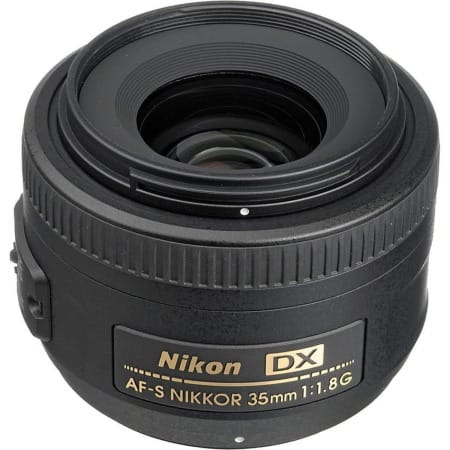
- Best For: Portraits, street, and general-purpose photography.
- Pros: Lightweight, sharp images, wide aperture for low light and background blur.
- Cons: Fixed focal length may limit framing flexibility for some users.
Nikon AF-P DX NIKKOR 18-55mm f/3.5-5.6G VR
This lens is often included as a kit lens with entry-level Nikon DSLRs, and for good reason. The Nikon AF-P DX NIKKOR 18-55mm f/3.5-5.6G VR is a versatile zoom lens that covers a standard focal range, making it useful for a variety of scenes, from landscapes to close-ups. Its Vibration Reduction (VR) feature minimizes camera shake, making it easier for beginners to capture sharp photos without a tripod.
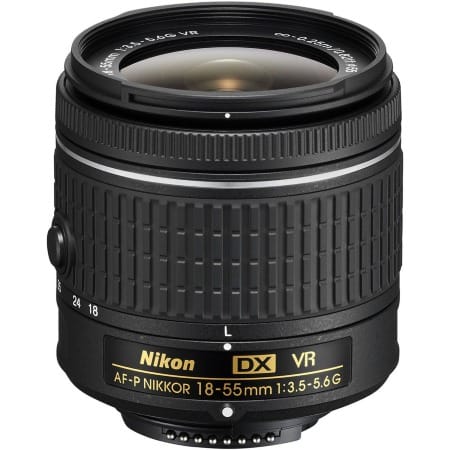
- Best For: General-purpose, landscapes, travel photography.
- Pros: Affordable, versatile focal range, VR for steadier shots.
- Cons: Limited low-light performance due to smaller maximum aperture.
Nikon AF-S DX NIKKOR 50mm f/1.8G
Known as the “nifty fifty,” the Nikon AF-S DX NIKKOR 50mm f/1.8G is a must-have prime lens that offers incredible sharpness and background separation. This lens is highly regarded for its wide f/1.8 aperture, which excels in low-light conditions and creates beautiful, smooth bokeh. It’s a great choice for portraits and works well on both DX and FX Nikon camera bodies.
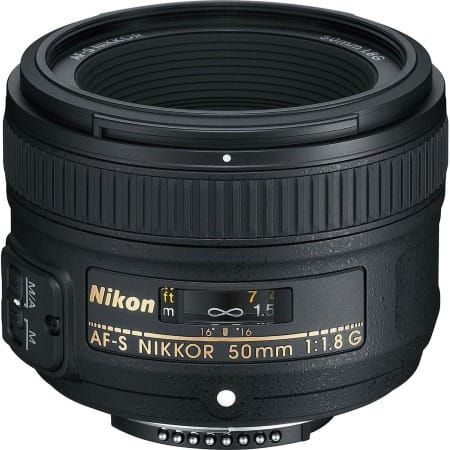
- Best For: Portraits, low-light, and close-up photography.
- Pros: Affordable, sharp, ideal for background separation.
- Cons: Fixed focal length limits flexibility compared to zoom lenses.
Nikon AF-S DX NIKKOR 55-200mm f/4-5.6G ED VR II
For beginners interested in telephoto photography, the Nikon AF-S DX NIKKOR 55-200mm f/4-5.6G ED VR II is a fantastic, affordable option. This lens offers a longer reach, making it ideal for capturing wildlife, sports, or distant subjects. The built-in Vibration Reduction (VR) helps maintain sharpness even at higher zoom levels, which is crucial for handheld shots.
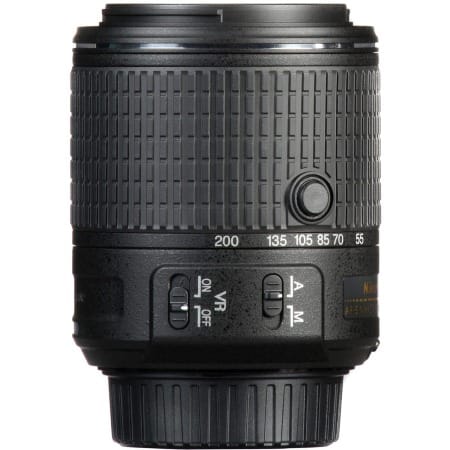
- Best For: Wildlife, sports, and action photography.
- Pros: Budget-friendly telephoto reach, VR for reduced camera shake.
- Cons: Narrow aperture may limit low-light performance.
Nikon AF-S DX Micro-NIKKOR 40mm f/2.8G
The Nikon AF-S DX Micro-NIKKOR 40mm f/2.8G is a macro lens that introduces beginners to the fascinating world of close-up photography. With a 1:1 reproduction ratio, it captures tiny details with impressive sharpness, making it ideal for photographing small objects, flowers, and textures. Despite being a specialized lens, it’s also versatile enough for portraits and other close-up work.
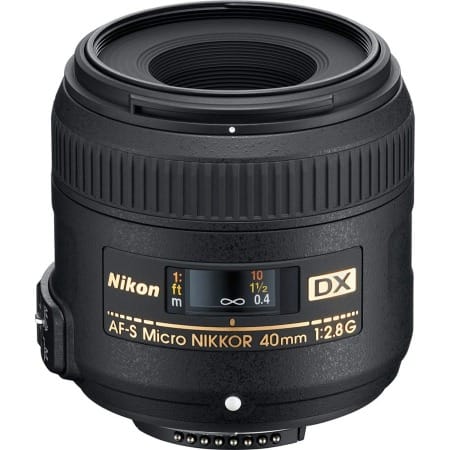
- Best For: Macro, product photography, portraits.
- Pros: Sharp images, true macro capability, versatile for other uses.
- Cons: Short focal length may require getting close to subjects, lacks VR.
Summary
These affordable Nikon lenses each offer distinct advantages that cater to different photographic styles and needs, from portraits and landscapes to macro and telephoto shots. By investing in one or more of these budget-friendly lenses, beginners can explore a wide range of creative possibilities, gaining hands-on experience with various focal lengths and aperture settings. Each lens is designed to help beginners enhance their photography skills without a significant financial commitment, making them ideal choices for anyone starting their journey with Nikon.
Practical Tips for Using Nikon Lenses as a Beginner
Once you've selected a lens, knowing how to use it effectively can make a huge difference in your images. As a beginner, familiarizing yourself with the basics of Nikon lenses and learning a few essential techniques will help you make the most of your equipment. Here are practical tips to enhance your photography experience with Nikon lenses, from controlling depth of field to making the best use of image stabilization.
Experiment with Depth of Field
Depth of field (DOF) refers to the area in focus in an image. A shallow DOF isolates the subject by blurring the background, which can be achieved by using a wide aperture (like f/1.8 or f/2.8). Prime Nikon lenses, such as the 50mm f/1.8, are perfect for experimenting with this effect. Start by adjusting your aperture to a low f-stop to create a softer background and emphasize your subject, a technique that works beautifully for portraits and close-up photography.
- Tip: Use your camera’s aperture priority mode (A or Av) to control depth of field easily. Set a low f-stop for a shallow DOF and a high f-stop (like f/8 or f/11) to keep more of the scene in focus, ideal for landscapes or group photos.
Utilize Vibration Reduction (VR) When Needed
Many Nikon lenses come with Vibration Reduction (VR) technology, which helps reduce blur caused by camera shake. This feature is particularly helpful when shooting handheld in low-light conditions or with telephoto lenses, where slight movements can lead to noticeable blurring. While VR can be a lifesaver in these situations, it's best to turn it off when using a tripod, as VR can sometimes cause slight shifts when the camera is already stable.
- Tip: Make it a habit to enable VR when shooting handheld in low-light settings or at slower shutter speeds to improve image sharpness. For scenes that require extreme precision, such as macro or landscape shots on a tripod, consider turning VR off.
Understand Zoom vs. Prime Lens Benefits
Zoom lenses provide flexibility, allowing you to capture various perspectives without changing lenses, which is useful for events, travel, or scenes with dynamic elements. However, prime lenses (with a fixed focal length) typically offer sharper images and a wider maximum aperture. Understanding the strengths of each lens type helps you make the most of Nikon lenses suited to specific genres or conditions.
- Tip: If you're using a zoom lens, try experimenting with both the widest and longest focal lengths to understand its range and limitations. This will give you better control over framing and composition in a variety of scenarios.
Practice Shooting in Different Lighting Conditions
Lighting can drastically affect your photos, and Nikon lenses can perform differently depending on the available light. Low-light situations, for example, can challenge beginners, especially with lenses that have a narrow maximum aperture. Practice shooting in different lighting scenarios, such as natural daylight, indoor lighting, and evening scenes, to understand how your lens handles each situation. Learning to control ISO and shutter speed, alongside the aperture, will further enhance your adaptability.
- Tip: In low light, use a lens with a wider aperture, like an f/1.8 or f/2.8, or increase ISO if needed to maintain a faster shutter speed. Experimenting in varied lighting helps build confidence in adapting settings quickly.

Try Different Focus Modes and Techniques
Most Nikon lenses allow you to switch between autofocus (AF) and manual focus (MF). While autofocus is reliable for many situations, manual focus can be more precise for tasks like macro photography, where detail matters. Practicing both modes will expand your control over focusing, helping you capture scenes exactly as intended.
- Tip: Use autofocus for moving subjects, like in sports or wildlife, and switch to manual focus for more control in stationary subjects or when shooting with shallow depth of field.
Summary
Mastering these techniques with your Nikon lenses can significantly improve the quality of your photos and build your confidence as a beginner. By experimenting with depth of field, utilizing VR appropriately, exploring zoom vs. prime advantages, adapting to different lighting, and mastering focus techniques, you’ll learn to leverage the full potential of your equipment. These hands-on tips provide a solid foundation to make the most of your Nikon lenses and develop a personalized shooting style as you progress.
Budgeting Tips for Buying Nikon Lenses
Investing in quality lenses can transform your photography, but as a beginner, finding budget-friendly options is often a priority. While Nikon lenses come in a wide range of prices, there are strategies to help you access high-quality lenses without overspending. Here are practical tips to keep in mind when budgeting for Nikon lenses, from finding deals to exploring alternative brands and purchasing second-hand.
Consider Purchasing Refurbished or Used Nikon Lenses
One of the best ways to save on lenses is to look for refurbished or used options. Nikon offers refurbished lenses directly through their website, ensuring that these products have been carefully inspected, repaired (if necessary), and certified to function like new. Refurbished lenses can offer substantial savings without sacrificing quality.
For used lenses, reputable stores like B&H, Adorama, and KEH provide ratings for the lens condition, so you know what you’re getting. Sites like eBay or Facebook Marketplace can also offer deals, but be sure to buy from sellers with strong reviews and, if possible, test the lens before purchase.
- Tip: Check the return policy when buying used or refurbished lenses. A good return policy ensures peace of mind in case the lens doesn’t meet expectations or has unexpected issues.
Watch for Seasonal Sales and Discounts
Sales events, like Black Friday, Cyber Monday, and holiday sales, can be a prime time to find discounts on Nikon lenses. Many retailers offer significant discounts during these times, sometimes even bundling lenses with camera bodies or accessories. Additionally, Nikon occasionally runs promotions or rebates on selected lenses, allowing you to save without compromising on new products.
- Tip: Sign up for notifications from major camera retailers and Nikon’s own website to stay informed about upcoming sales or discounts.
Explore Third-Party Lens Options
Third-party lens manufacturers, such as Sigma, Tamron, and Tokina, produce compatible lenses for Nikon cameras, often at lower prices than Nikon’s proprietary lenses. These lenses are designed to work seamlessly with Nikon cameras and can be excellent alternatives for photographers on a budget. Many third-party lenses provide similar, if not better, performance in certain aspects, particularly in prime and zoom categories.
- Tip: When choosing third-party lenses, read reviews specific to Nikon cameras to ensure optimal compatibility and performance. Sigma’s ART series, for example, is highly regarded for image quality and can be a cost-effective choice.
Prioritize Essential Focal Lengths
When building your lens collection, focus on essential focal lengths that match your photography needs rather than purchasing multiple lenses at once. For example, a 50mm f/1.8 is a versatile and affordable prime lens that can cover a range of photography styles, from portraits to everyday shots. Similarly, an 18-55mm kit lens provides versatility for beginners without the need for immediate upgrades.
- Tip: Start with a versatile lens that can serve multiple purposes, then add specialized lenses as you gain experience and a clearer idea of your preferred genres.
Join Photography Communities and Forums for Recommendations
Photography forums, online communities, and social media groups dedicated to Nikon users are excellent resources for budget-conscious lens shopping. Members often share experiences with specific lenses, alert others to deals, and even sell or trade lenses at lower prices within the community. Joining these groups can provide valuable insights on affordable Nikon lenses and tips on where to buy them.
- Tip: Look for Nikon-specific groups, as these communities are likely to have the most relevant advice and recommendations tailored to Nikon gear.
Summary
By exploring refurbished or used lenses, waiting for sales, considering third-party options, prioritizing essential focal lengths, and engaging with photography communities, beginners can build a versatile lens collection without breaking the bank. Budgeting for Nikon lenses doesn’t mean compromising on quality; with careful planning and research, it’s entirely possible to acquire high-performance lenses at reasonable prices. Each of these strategies allows you to save on costs while gradually building a set of lenses that supports your photography goals.
Conclusion
In conclusion, building a solid collection of Nikon lenses on a budget is entirely achievable with strategic planning. Beginners can enhance their photography skills without overspending by focusing on essential focal lengths, exploring refurbished or second-hand lenses, taking advantage of seasonal sales, and considering third-party options from reputable brands like Sigma or Tamron. Photography communities and online forums also offer invaluable insights and deals, allowing you to learn from others' experiences and potentially find affordable gear within your budget.
Remember, a good lens is a long-term investment that can significantly impact the quality of your images, often more than the camera body itself. By approaching your lens purchases thoughtfully, you can build a collection that serves various photography styles and grows with you as you advance. With patience and research, you’ll find quality Nikon lenses that meet both your creative vision and budget constraints.

